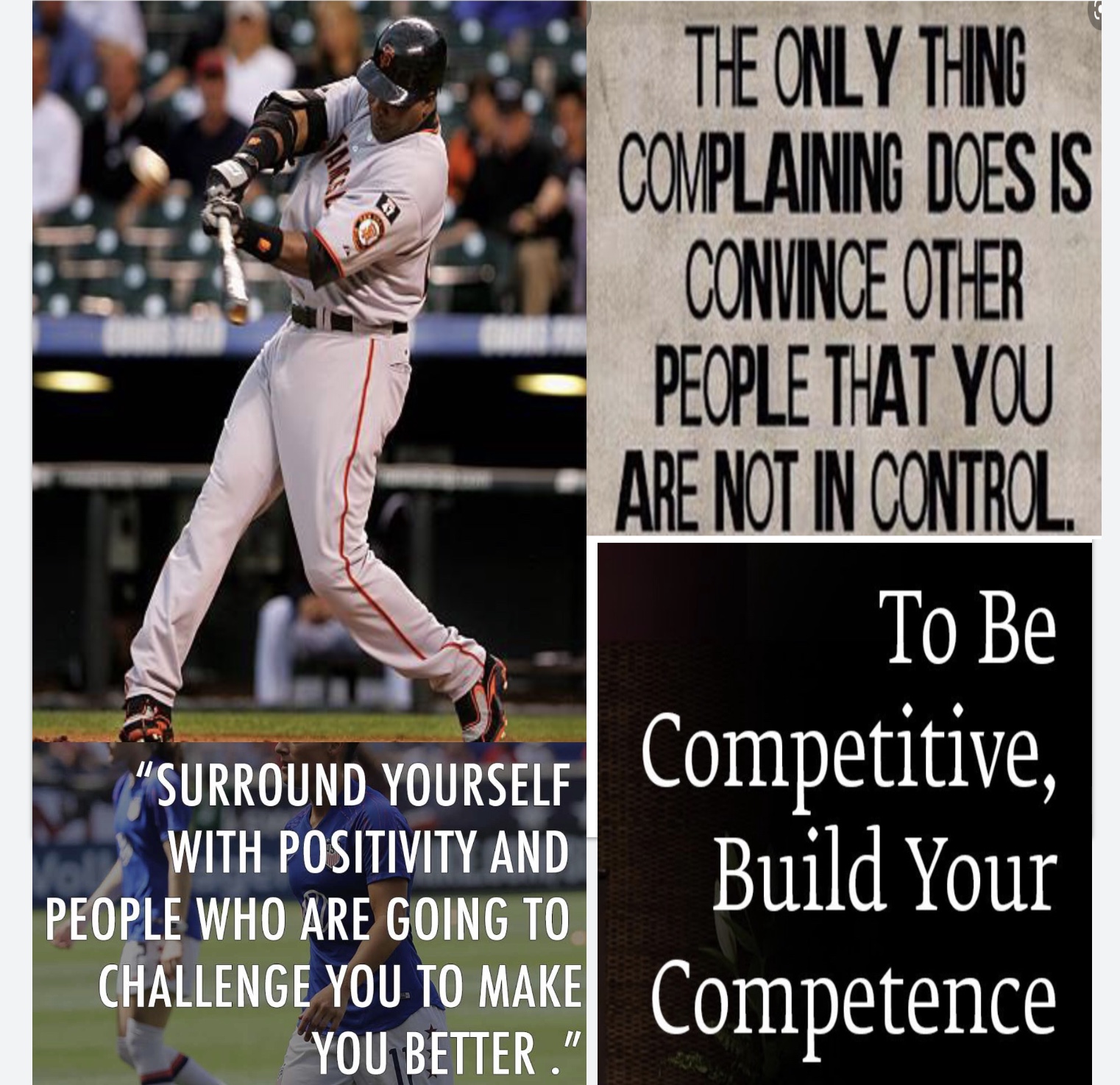
This week’s article is written by Coach Bryce Neal, assistant softball coach/hitting coach at the University of Louisville.
It is a significant article because it combines swing mechanics (mechanical/physical adjustments) with swing approach (mental/visual processing). Last week we talked about a HIT APPROACH to the riseball/4 seam fastball. Every coach has their own “cues” and adjustments; Bryce does a great job explaining and illustrating his and gives specific adjustments for pitches ”up” and ”down”. Thanks for sharing Coach!
Deeper Dive — Posture & Approach
So much of hitting at higher levels is understanding YOUR swing and how that effects your approach and game-planning.
Even the best hitters in the world have holes; none is “matchup proof”. One of the key separators between elite and average is how a hitter is able to leverage their strengths to create an advantage and mitigate their weaknesses.
Let’s expand on a few factors that allow elite hitters to cover more of the zone and make better decisions at a higher rate of consistency.
Posture — Hip flexion or hinging at the hips. (*Posture also applies to the positioning of the spine in all three planes of motion).
VBA — Vertical Bat Angle.
Early Connection (Alignment)— Relationship of the bat to the spine at the start of the swing.
Connection at Impact — Relationship of the bat to the spine at contact.
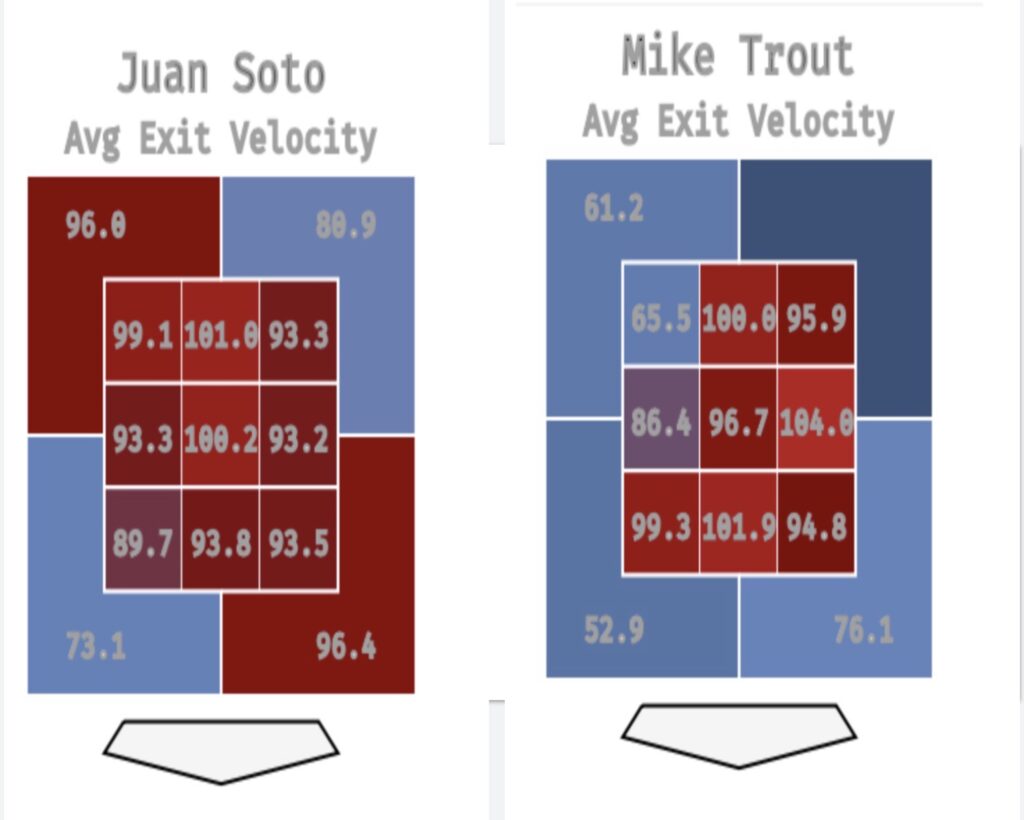
When we start to look at the data of the best hitters, things begin to become clearer. Mike Trout is known to have a vertical barrel path and utilizes side bend to adjust down in the zone — as a result his average exit velocity is the worst at up & in (65.5 mph – a drop off over 35 mph from his best of 104 mph on the middle-outside pitch).
Juan Soto is known for a flatter barrel path and swings with less side bend (so as expected his lowest average exit velocity is 89.7 mph on the down and in pitch).
Obviously, both have been very successful. Mike Trout understands that his swing is more vertical, and his swing decisions indicate this – he swings down in the zone more often. Juan Soto understands his strengths,; he swings more often up in the zone.
Game-planning and approach CANNOT be blanketed across a lineup. What should you consider? For me, its recognizing pitch path and then matching the hitter’s body positioning and barrel path accordingly.
Here is a good visual via Tyler Jeske of how to go about recognizing pitch path.

What are we looking at? A major league hitter’s plan includes where he sets his gaze initially, recognizing pitch shape, using sight triangles, and an external visual or thought that influences barrel path adjustments based on VBA and posture.
Here is a real-world rudimentary example.
Hitter 1 (RHH) has a very “flat path” (lower VBA). We are game planning for a RHP that throws screw & curve and has a release from the right side of the rubber. Hitter 1 should set his/her sights on the middle of the plate/away -external cue should be RCF (right center field gap). This eliminates the screw in & curve that starts on the black and runs through the river. The external cue of RCF ensures that the hitter sets his/her direction properly to hit “through” the spin.
Hitter 2 (RHH) has a very “vertical path” (steeper VBA). We are game planning for a RHP that throws screw & curve again and has a release from the right side of the rubber. Hitter 2 should look middle/in, external cue should be CF. This eliminates the curve away; the external cue will keep the hitter “inside” the ball.
Real quick: Some don’t believe in “hunting” pitches. There is AMPLE scientific evidence that supports this (*and has been addressed by Swing Attractors in prior articles).
POSTURE
So, how should approach effect posture.
The best hitters are holding their angles in the arms. They adjust dynamically with posture; adjustments come from larger muscles/joint segments. The less you must use your arms to adjust the more consistent you will be (early connection/connection at impact/side bend).
Therefore, the best hitters understand they need to adjust their posture based on what pitch they are “hunting”. Example, if you are looking for a low-rise ball that will enter the hitting zone at the top of the zone, if you land in too much posture you will be working back up to the ball- not ideal. If you land “too tall” when looking for a drop ball, you will be adjusting your posture too much during the swing and everything will suffer, most notably vision. Set your posture based on your approach!
There are hitters who dynamically adjust posture during the pitch recognition phase, here is an example. (Jessie Warren).
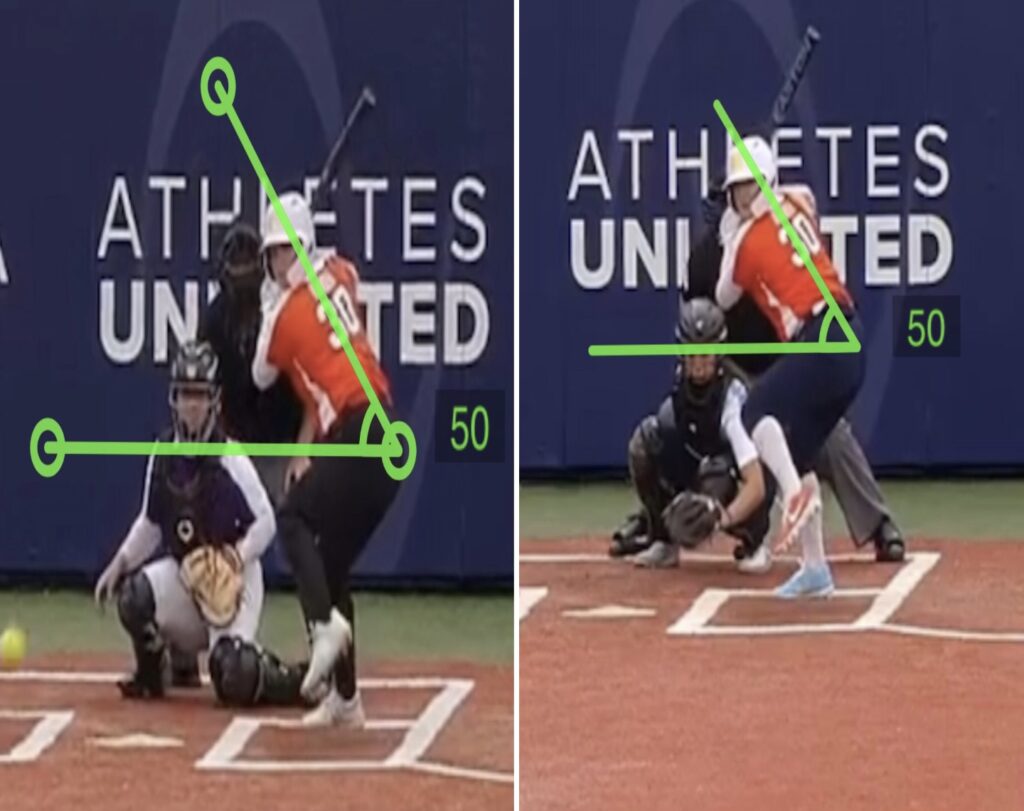
The photos above are at the top of Jessie Warren’s leg lift. The photo on the left is on a drop ball; the photo on the right is a rise ball. What you will see is at the top of her move the amount of “hinge” is relatively the same.
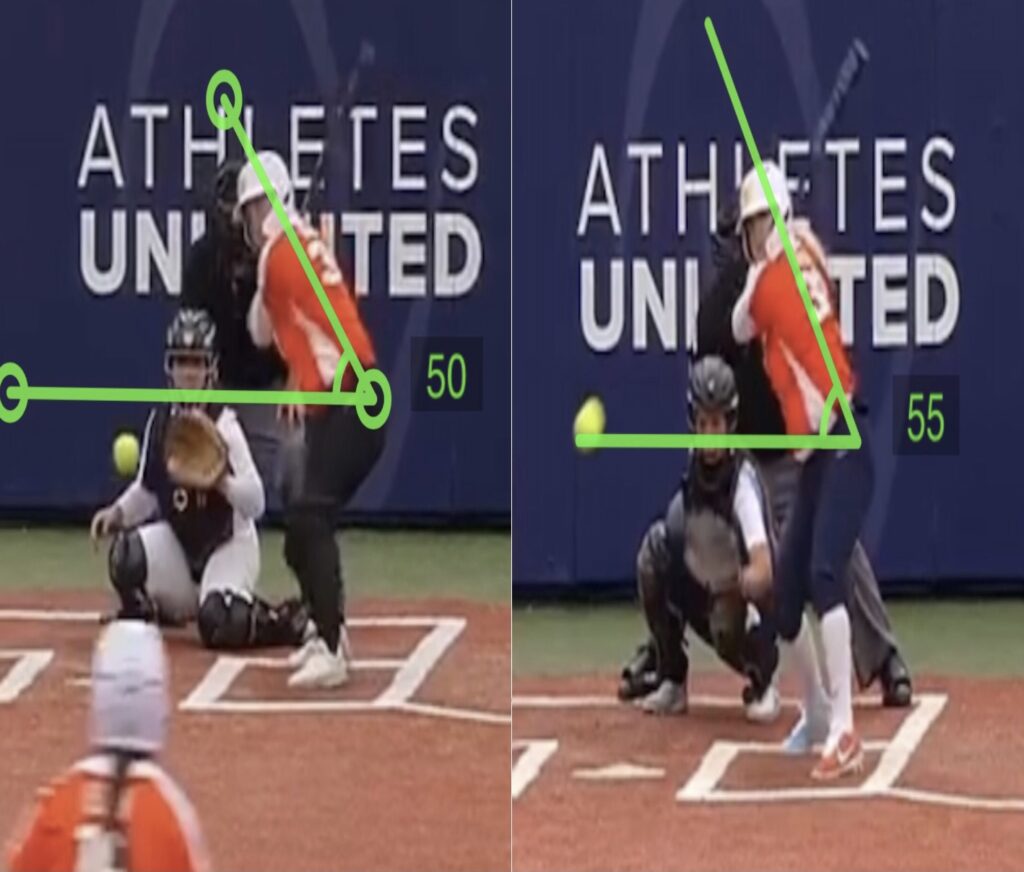
At foot plant you will see she has dynamically adjusted her posture or amount of hip flexion to match the plane of the pitch. This allows her to maintain the angles of the arms for adjustability purposes if needed.
So, what should hitters be taught? If a hitter has a move that allows them to dynamically adjust posture during the pitch recognition phase, that is ideal. This requires strength, athleticism, etc. If a hitter lacks the ability to control the pelvis and COM during the stride, they would be a candidate for a smaller move; this hitter should adjust posture pre-pitch recognition and be very understanding of his/her game-plan.
An efficient hitter’s bat path or swing plane is created by the alignment of the lead arm & barrel with the shoulder girdle (*also another component to ”posture” adjustments). [SEE THE PHOTOS BELOW]. Telling a hitter to “keep their hands above the ball” or “swing under it” without addressing posture lacks context and could have an adverse impact on your hitter.
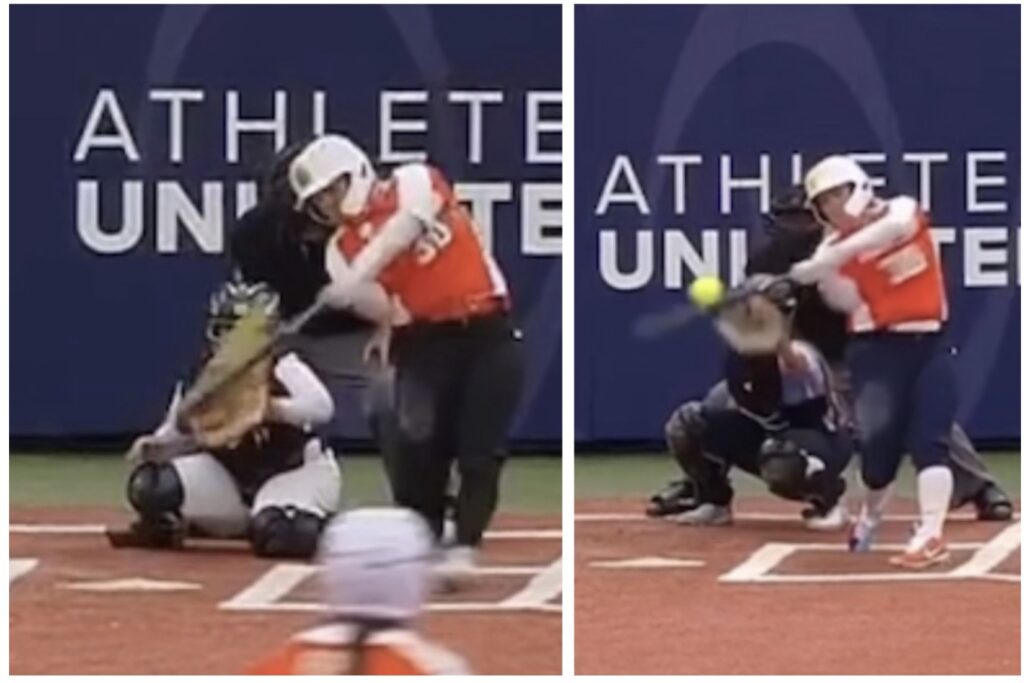
#HappyHitting
Bryce Neal
| Bryce Neal Assistant Softball Coach University of Louisville Athletics. 2100 S Floyd Street, Louisville, KY 40292 |
WHAT ARE YOUR TOP LIST OF ADJUSTMENTS TO HIT A HIGH PITCH?
Bryce gave us lots to consider. In preparation for publishing this article, I surveyed my hitting buddies and asked, ”What are your top 5 mechanical, swing adjustments to hit either a riseball or 4-seam fastball?” I got lots of different, generic answers like:
- Get on plane,
- Be on time,
- Don’t miss underneath,
- Get the barrel flatter sooner,
- Etc.
I told my ”buddies” – “thanks Captain Obvious”, we are searching for detailed, mechanical adjustments. Below is a side by side comparison of Lexi Elkins hitting a level #3 riseball and Jose Altuve hitting a 4 seam fastball – both pitches are on the extreme level of being ”hittable” &/or ”unhittable”. Both balls were hit for home runs in big games. Here are my TOP 5 Swing Adjustments to hit a riseball or 4-seam fastball, with 2 extra training, swing thoughts to go along with the mechanics.
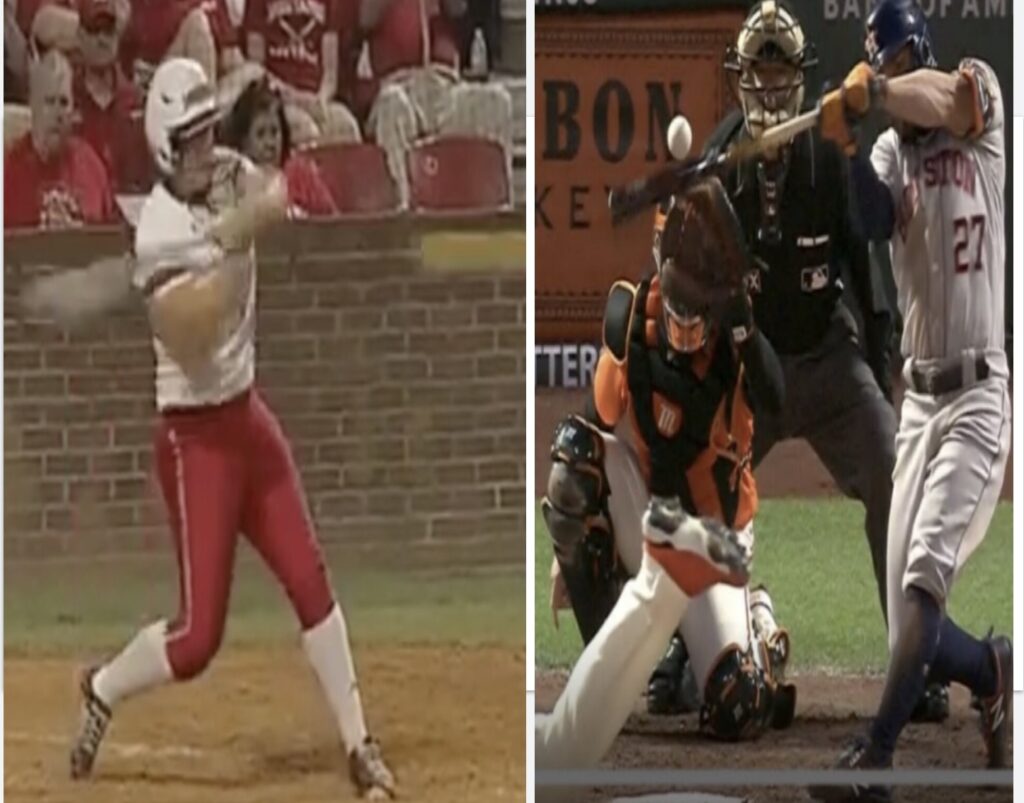
Some specific characteristics to make sure your hitters have made a ”posture” adjustment when they are successful in hitting the riseball or 4-seam fastball are:
- (1) the degree of tilt of their shoulders in the frontal plane is ”less” and thus their shoulders are closer to level. The back shoulder cannot collapse nor can the center of mass fall backwards.
- (2) Their weight shift is more balanced or forward which allows their ”posture” to be more UPRIGHT going into toe touch. No leaning backwards or staying one-legged. Both Lexi and Altuve are bearing little, if any weight on their back foot at contact.
- (3) Same concept with their swing AXIS – if you draw a line from their belly buttons to their noses (see the Freddie Freeman photo below) it will be close to ”straight up and down” as opposed to leaning backwards.
- (4) Both are able to get their arms/hands ”higher”, up to the plane of the pitch (referred to above as ALIGNMENT). Altuve’s hands appear to be about at the same height as his face. Lexi’s hands are shoulder level. It is a combination of lots of swing mechanics and adjustments that allow them to do this. It is NOT an isolated arm/hand movement.
- (5) The ”sag” or differential of the barrel from their hands is the bare minimum – they are NOT swinging down; they are NOT totally ”level”, but they are both as close to level with the barrel in relationship to their hands as possible.
- (6) Altuve still hit the bottom half of the ball and still hit a home run; but the idea is to set your sights on the upper half of the ball (Alex Bregman’s advice) and try to ”square it” at contact.
- (7) Lastly, remember the goal is to get ON PLANE but also to DO DAMAGE – hit the ball with POWER. It is important to make sure when making any mechanical adjustments for certain pitch locations that you still maintain as close to possible your peak bat speed and exit velocities. There will be some drop off in bat speed for the riseball and 4-seam fastball as pointed out above with Mike Trout because of the shorter swing radius for up and in, but a 35 m.p.h. drop off is not acceptable especially if the result becomes LAZY POP-UPS.
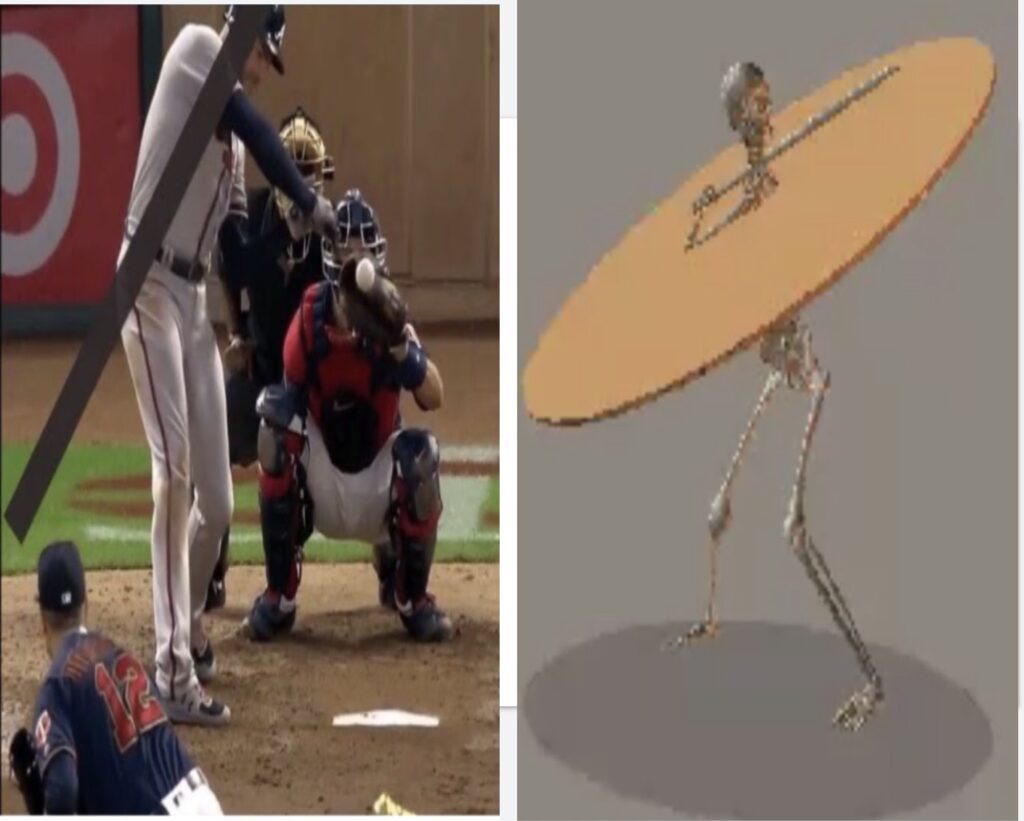
PURSUE EXCELLENCE & WIN THIS PITCH!
